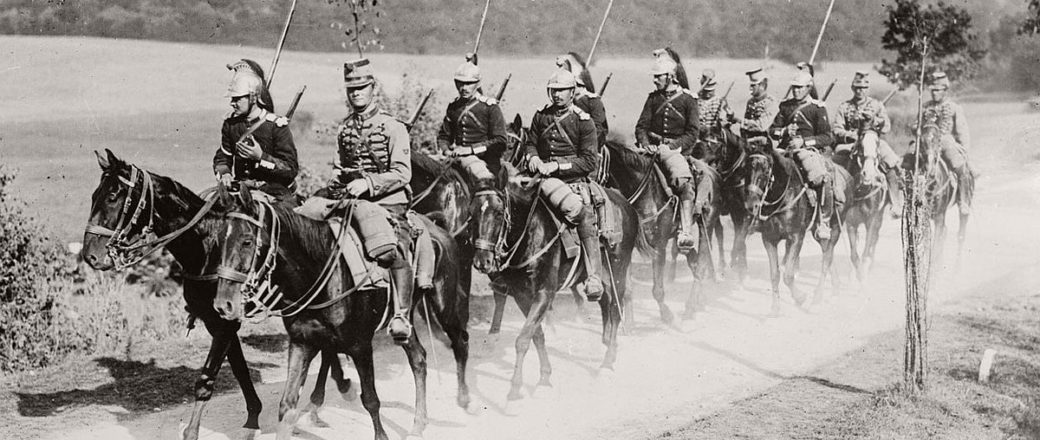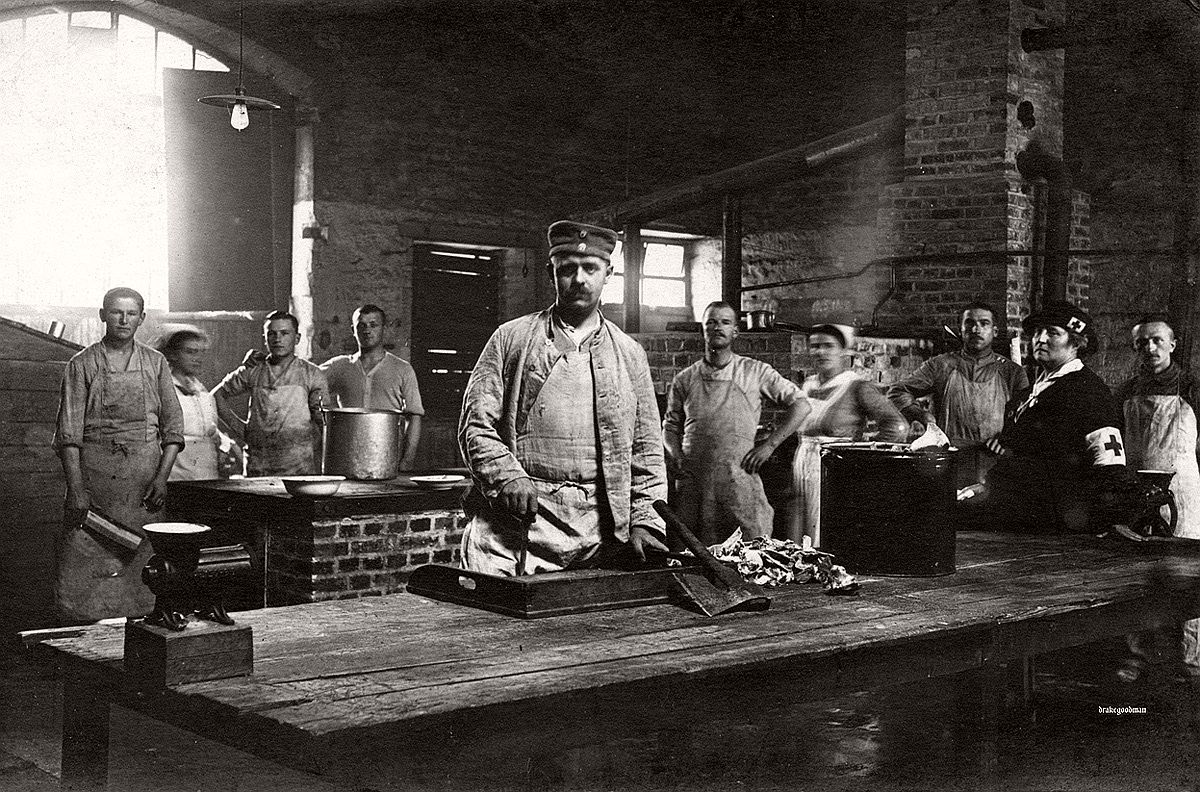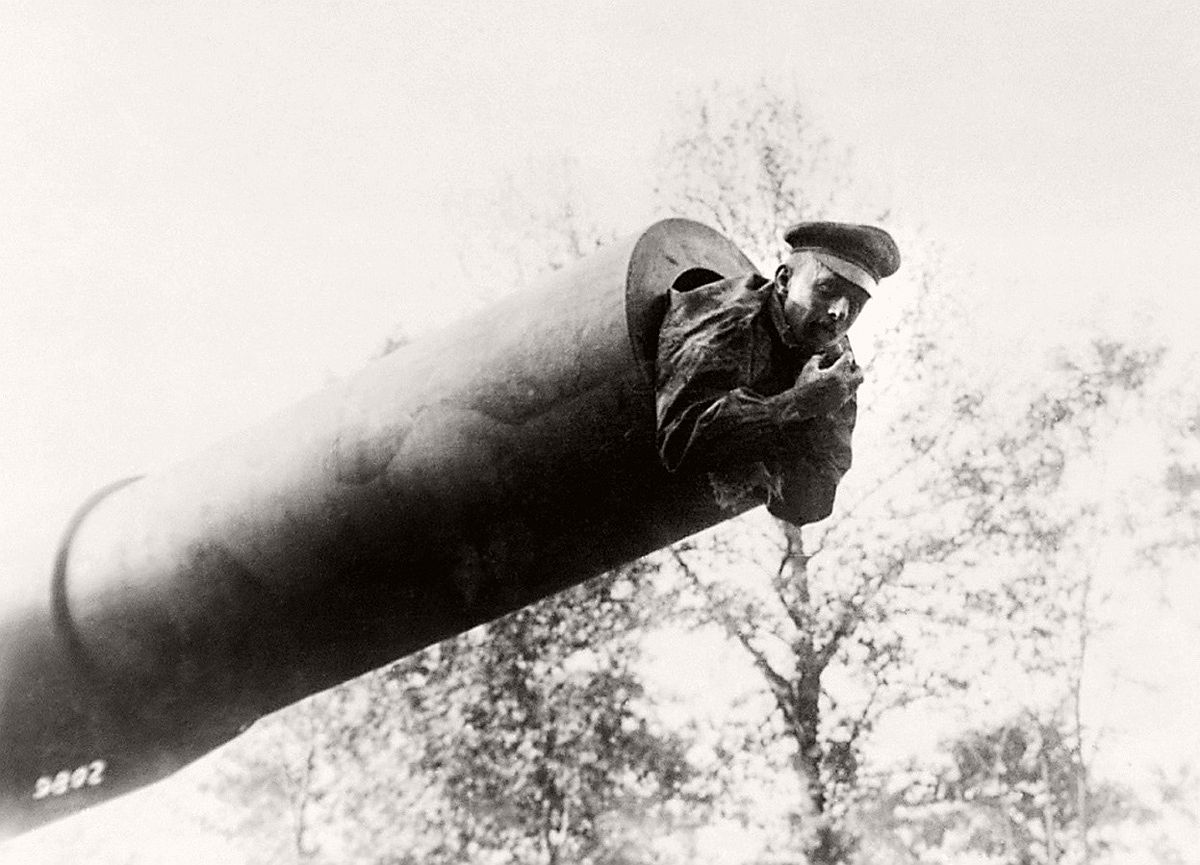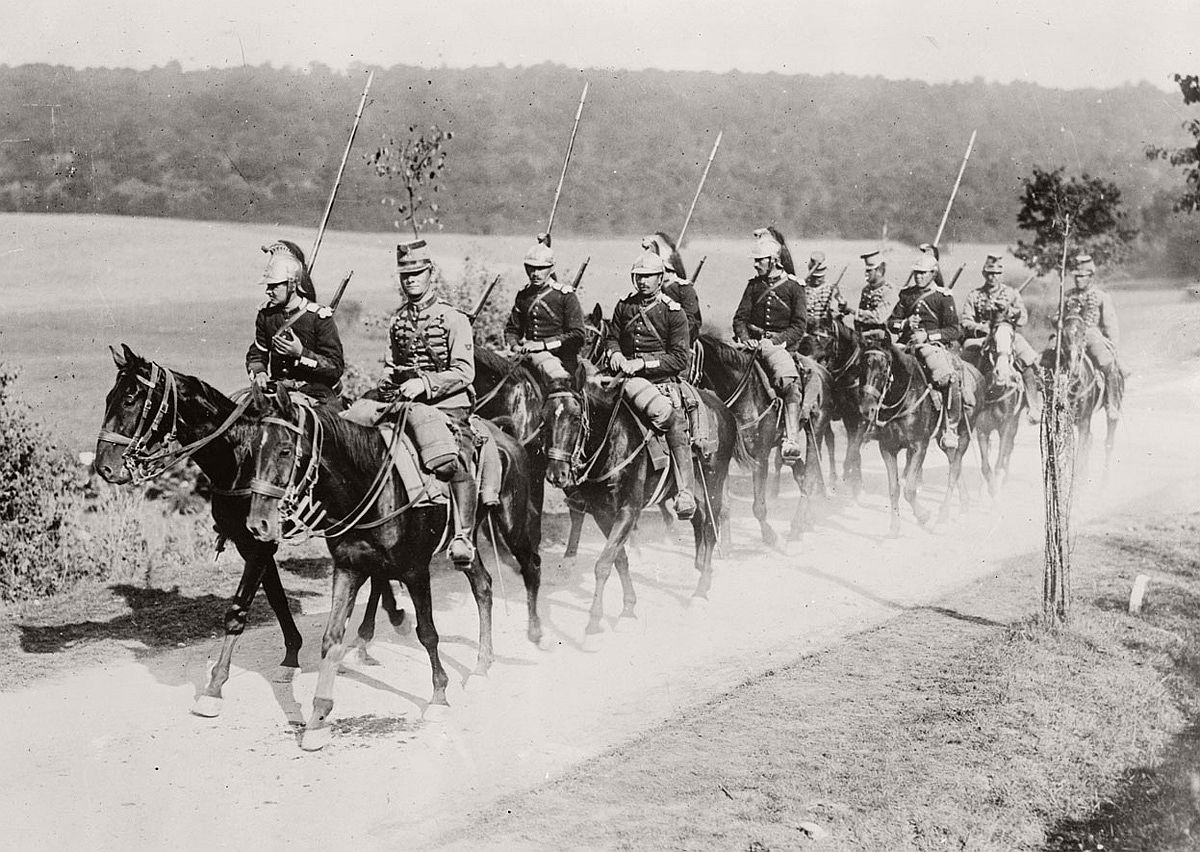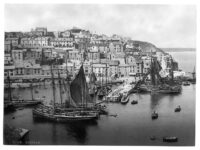Life for soldiers in World War I followed a specific routine that involved waking up at around 5 a.m., performing military drills when not engaged in direct combat, eating breakfast, having an early dinner, sleeping briefly, performing more military exercises and then doing physical labor before retiring for the evening. Soldiers in World War I spent most of the time in trenches on the front line. They rarely moved from the trenches except to move from one battle ground to the next, and shared close living and sleeping quarters with other men.
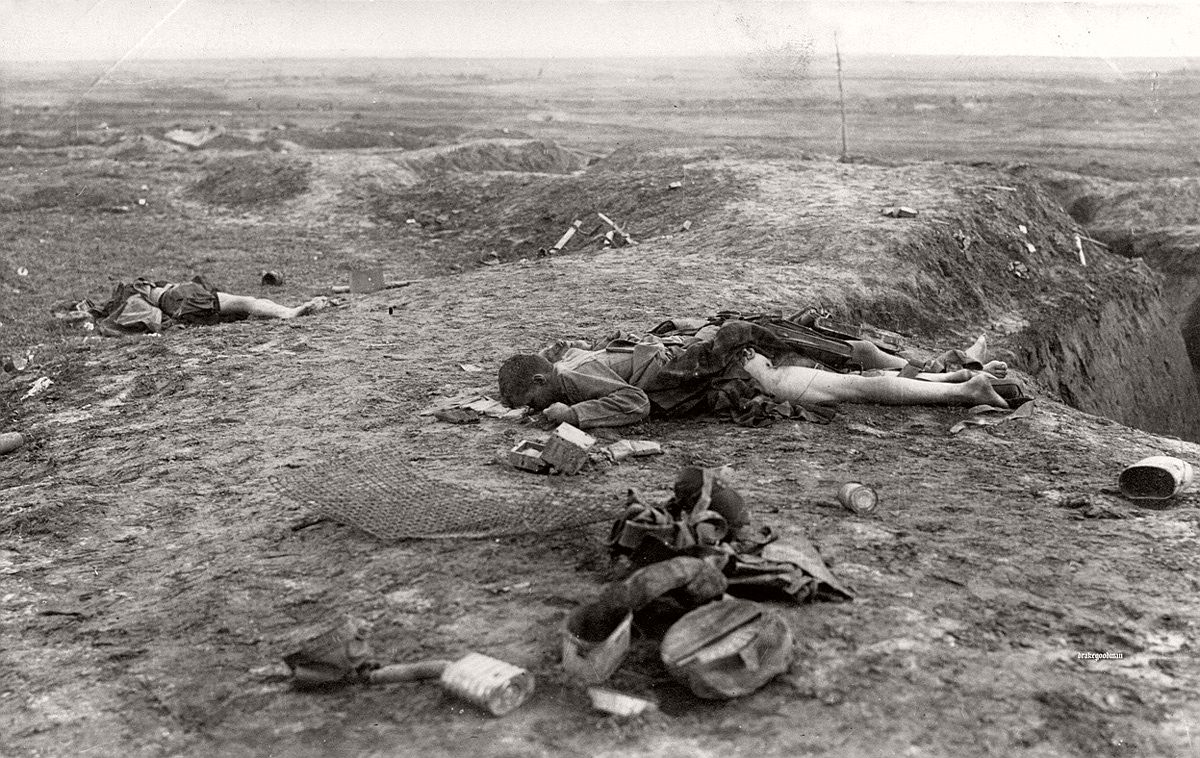
Highlanders on the Western Front, killed and later stripped of their socks and boots, ca. 1916. # Brett Butterworth

U.S. Signal Corps telephone operators in Advance Sector, 3 km from the trenches in France. The women were part of the Signal Corps Female Telephone Operators Unit and were also known as Hello Girls. Women have helmets and gas masks in bags on back of chairs. # National World War I Museum, Kansas City, Missouri, USA

Unidentified time and location, photograph from the “Pictorial Panorama of the Great War” collection, simply titled “Merci, Kamerad”. # State Library of New South Wales
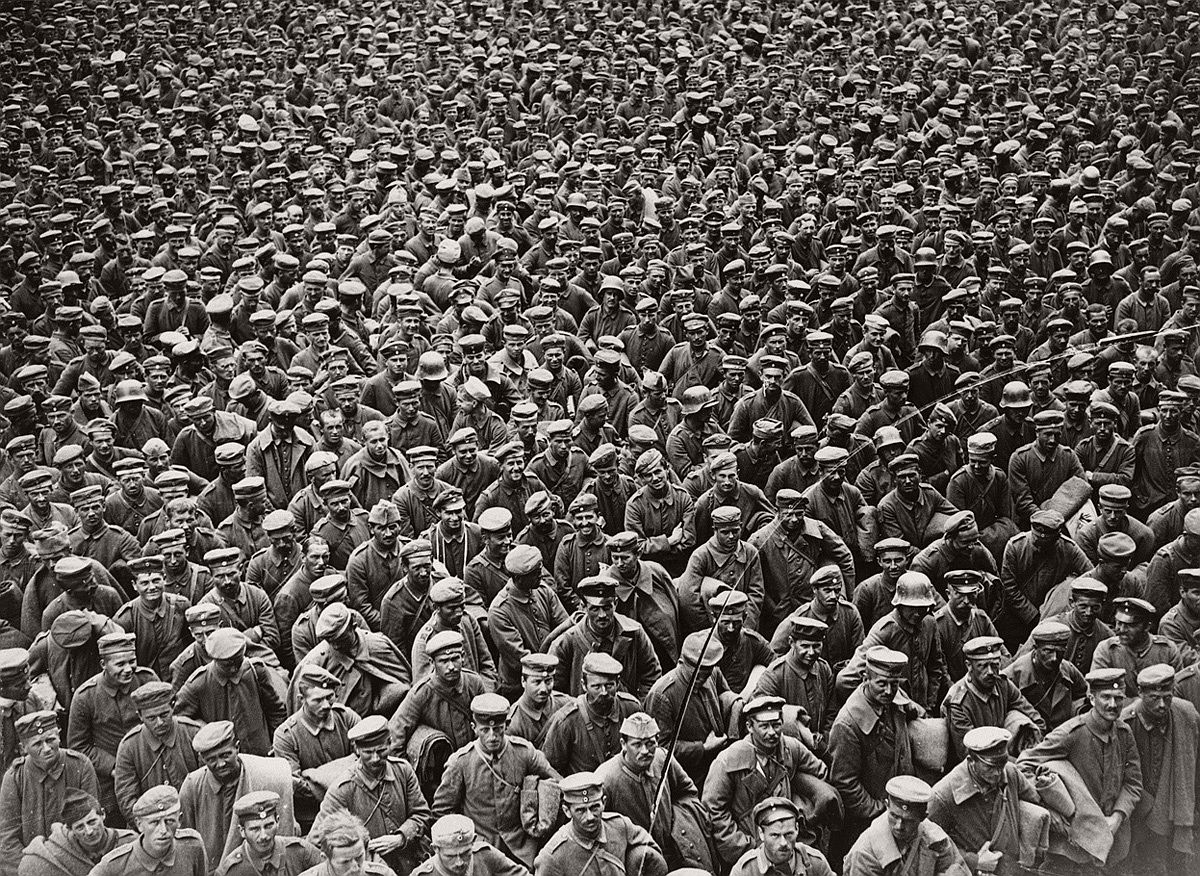
Massed German prisoners in France, probably taken after the Allied advance of August 1918. # National Library of Scotland

French soldiers, some wounded, some dead, after the taking of Courcelles, in the department of Oise, France, in June of 1918. # National Archives

French soldier whose face was mutilated in World War I, being fitted with a mask made at the American Red Cross studio of Anna Coleman Ladd. # Library of Congress
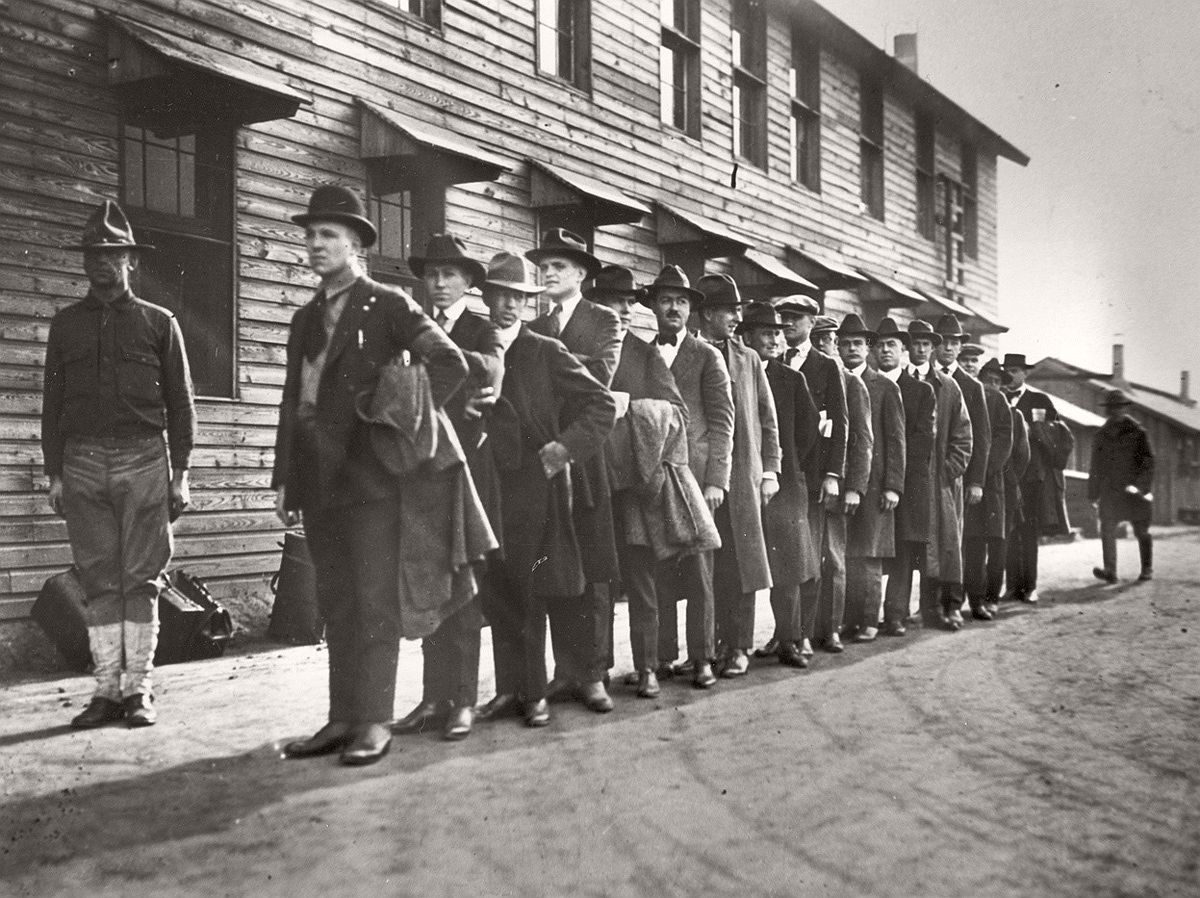
Recruits line up at a New York army camp shortly after President Woodrow Wilson declared war on Germany, in April of 1917. # AP
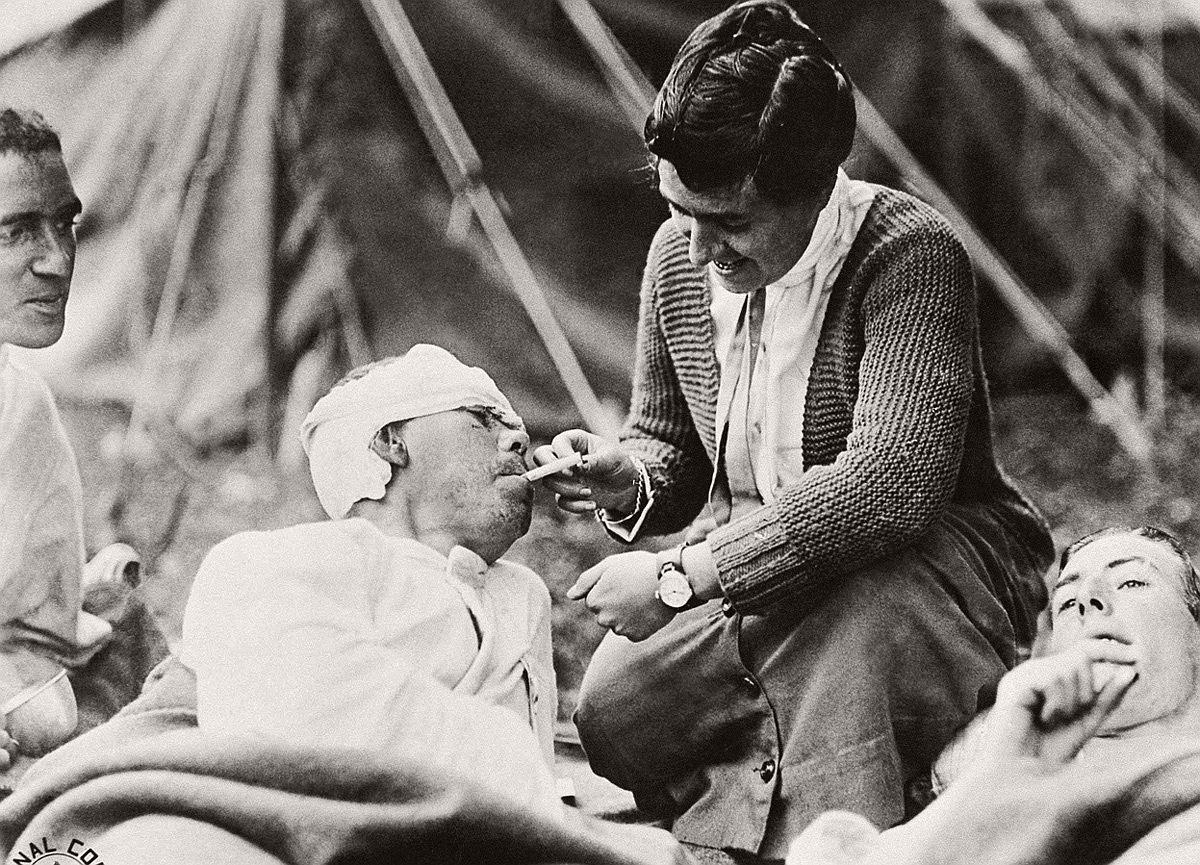
Private Ernest Stambash, Co. K, 165th Infantry, 42nd division, receives a cigarette from Miss Anna Rochester, American Red Cross volunteer at Evacuation Hospital No. 6 and 7, at Souilly, Meuse, France, on October 14, 1918. # AP
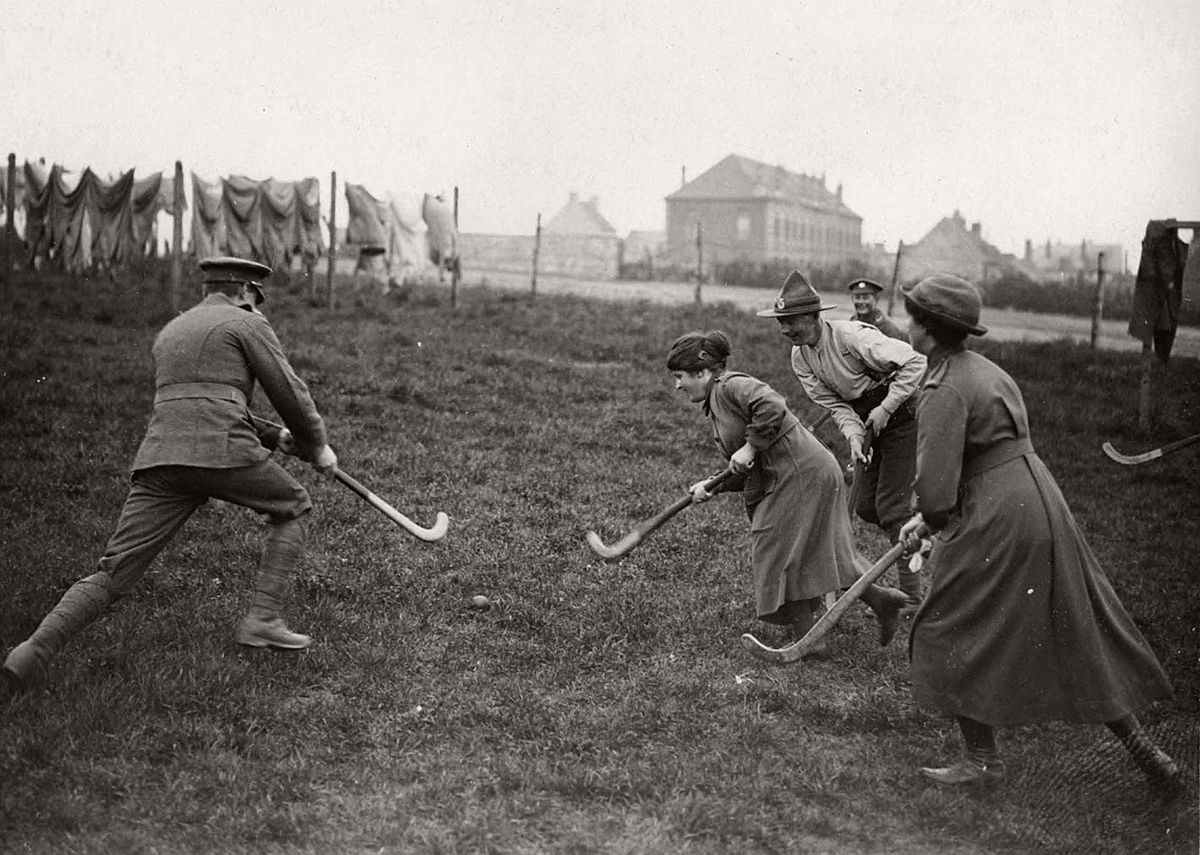
Women’s Army Auxiliary Corps (W.A.A.C.) members play field hockey with soldiers in France, during World War I, drying greens and convalescent home buildings visible in the background. # National Library of Scotland
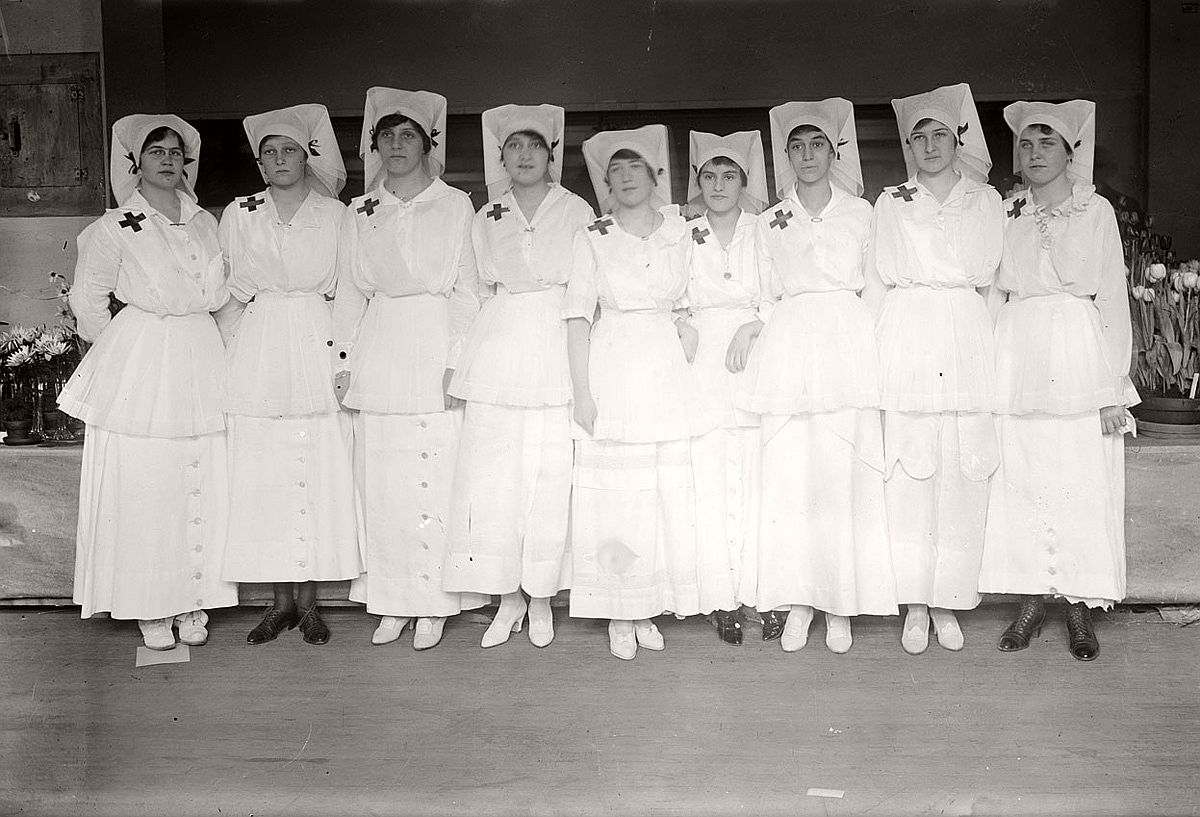
Red Cross volunteers Alice Borden, Helen Campbell, Edith McHieble, Maude Fisher, Kath Hoagland, Frances Riker, Marion Penny, Fredericka Bull, and Edith Farr. # Library of Congress
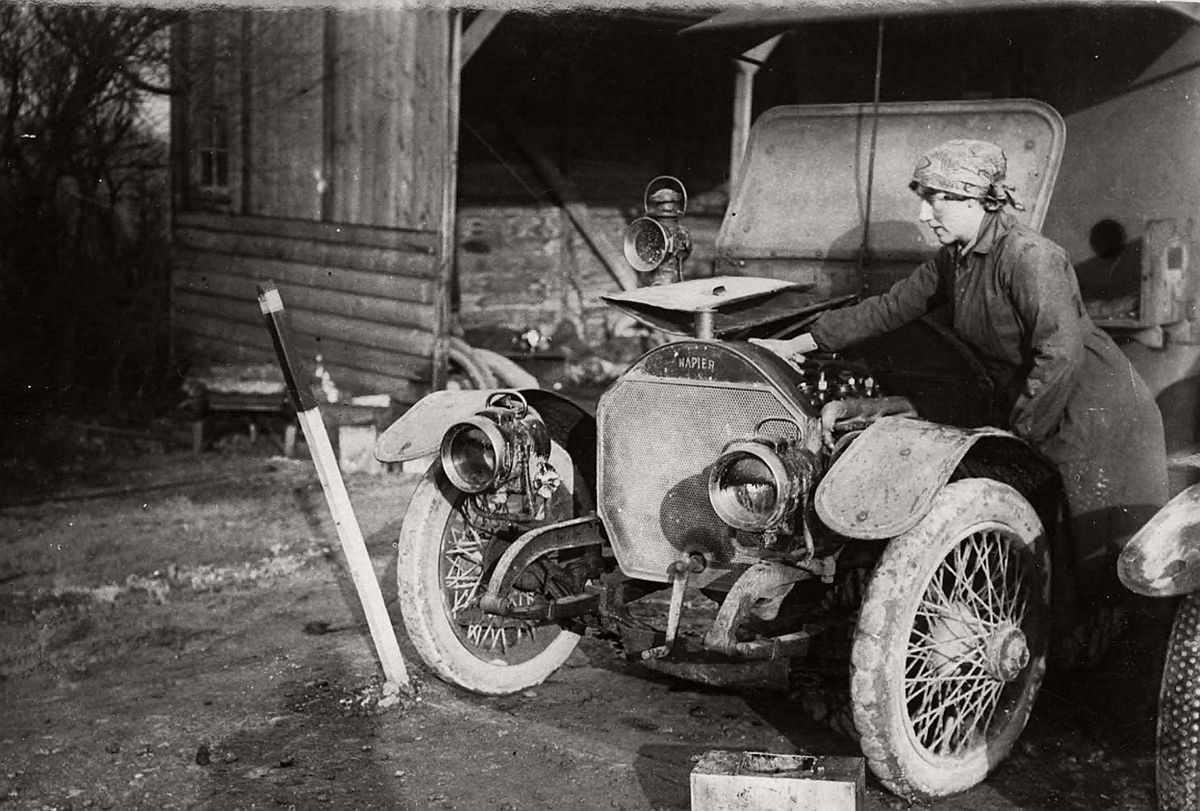
A member of the British First Aid Nursing Yeomanry oiling her car near the Western Front. # National Library of Scotland
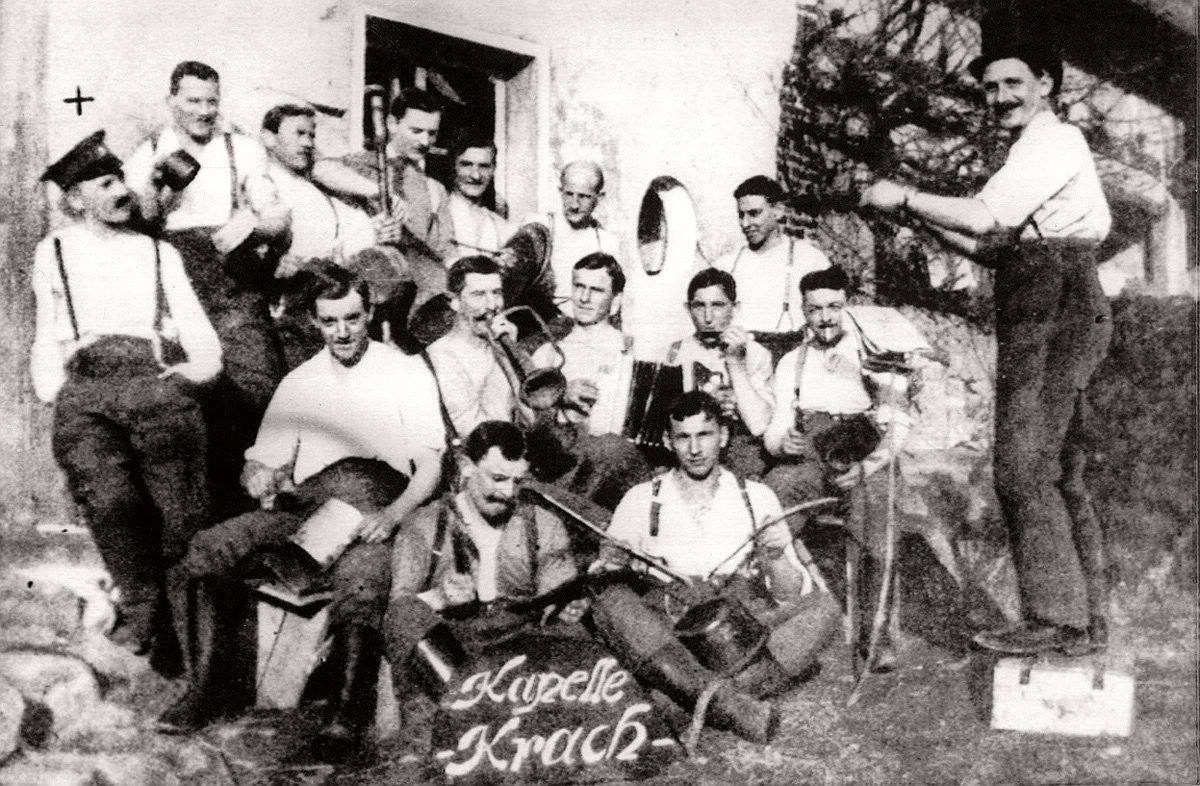
Undated image, reportedly of Corporal Adolf Hitler of the German Army, standing at left (under the “+”) with his comrades forming the band “Kapelle Krach”, during recovery from an injury he received on the western front during World War I. # AP
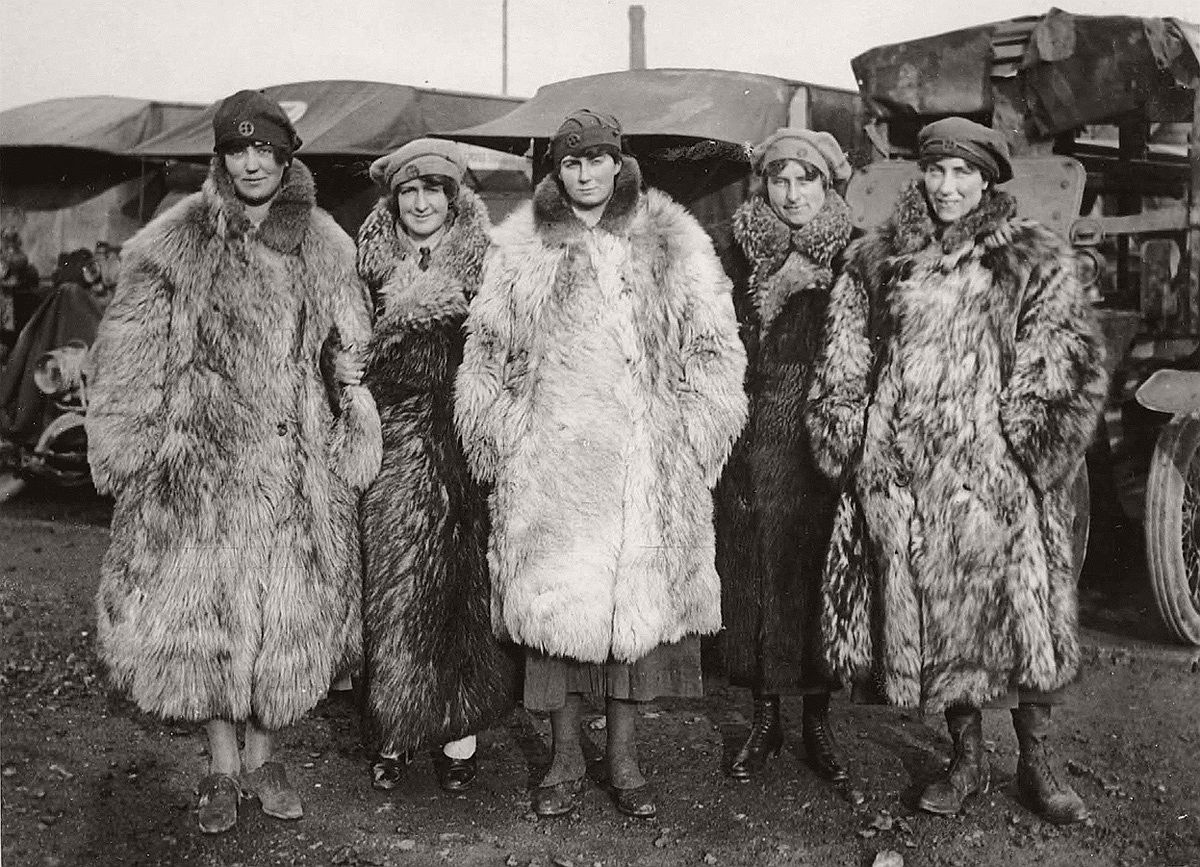
Dressed in a rather exotic uniform of army boots, army caps and fur coats, this image shows five female members of the First Aid Nursing Yeomanry standing in front of some Red Cross ambulances. As the first female recruits of this organization came from the ranks of the upper classes, perhaps the fur coats should not be too surprising. The women would have worked as drivers, nurses and cooks. Established by Lord Kitchener in 1907, the First Aid Nursing Yeomanry (FANY) was initially an auxiliary unit of women nurses on horseback, who linked the military field hospitals with the frontline troops. Serving in dangerous forward areas, by the end of the conflict First Aid Nursing Yeomanry members had been awarded 17 Military Medals, 1 Legion d’Honneur and 27 Croix de Guerre. A memorial to those women who lost their lives while working for the organization, can be found at St Paul’s Church, Knightsbridge, London. # National Library of Scotland

Guiseppe Uggesi, an Italian soldier in 223rd Infantry, who was in an Austrian Prison Camp at Milowitz, confined to bed with tuberculosis in January of 1919. # Library of Congress
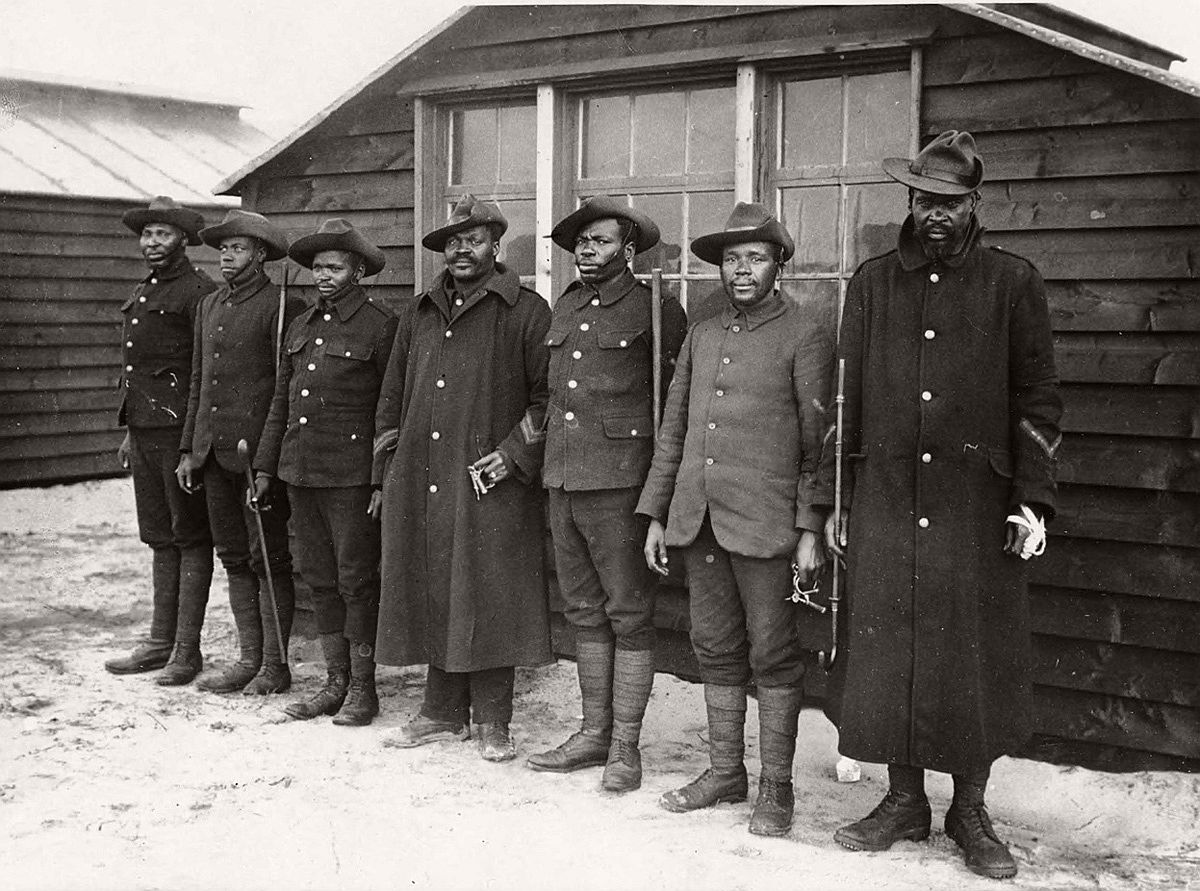
Labour Corps members, the caption identifies these seven men as ‘native police’. They are probably black South Africans who had contracted to work in the South African Native Labour Contingent (SANLC). In general the native police and NCOs were recruited from tribal chiefs or high-status native families. Some 20,000 South Africans worked in the SANLC during the war. They were not meant to be in combat zones, but there were inevitable deaths when the docks or transport lines on which they worked were bombed. The greatest tragedy was the sinking of the troopship SS Mendi on February 21, 1917, when 617 members of the SANLC were drowned in the English Channel. # National Library of Scotland
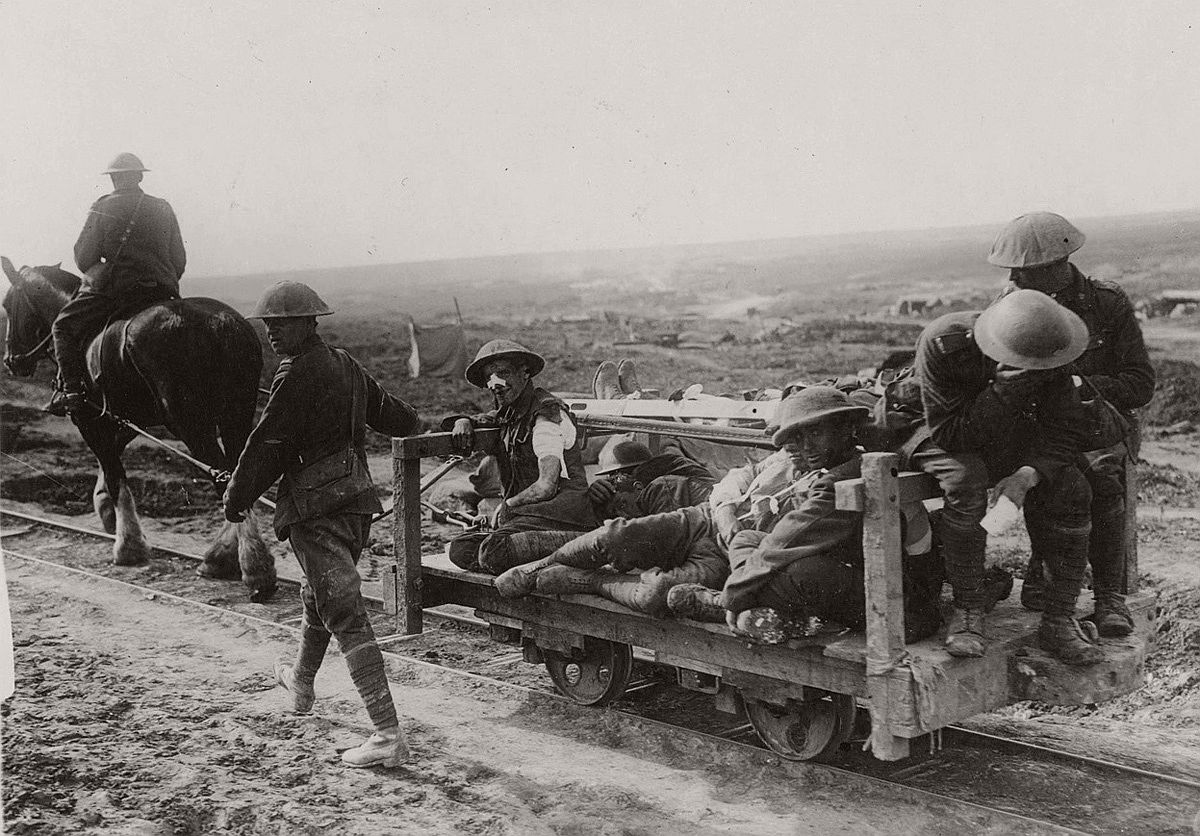
Some Canadian wounded being taken to the dressing station on a light railway from the firing line. # Nationaal Archief
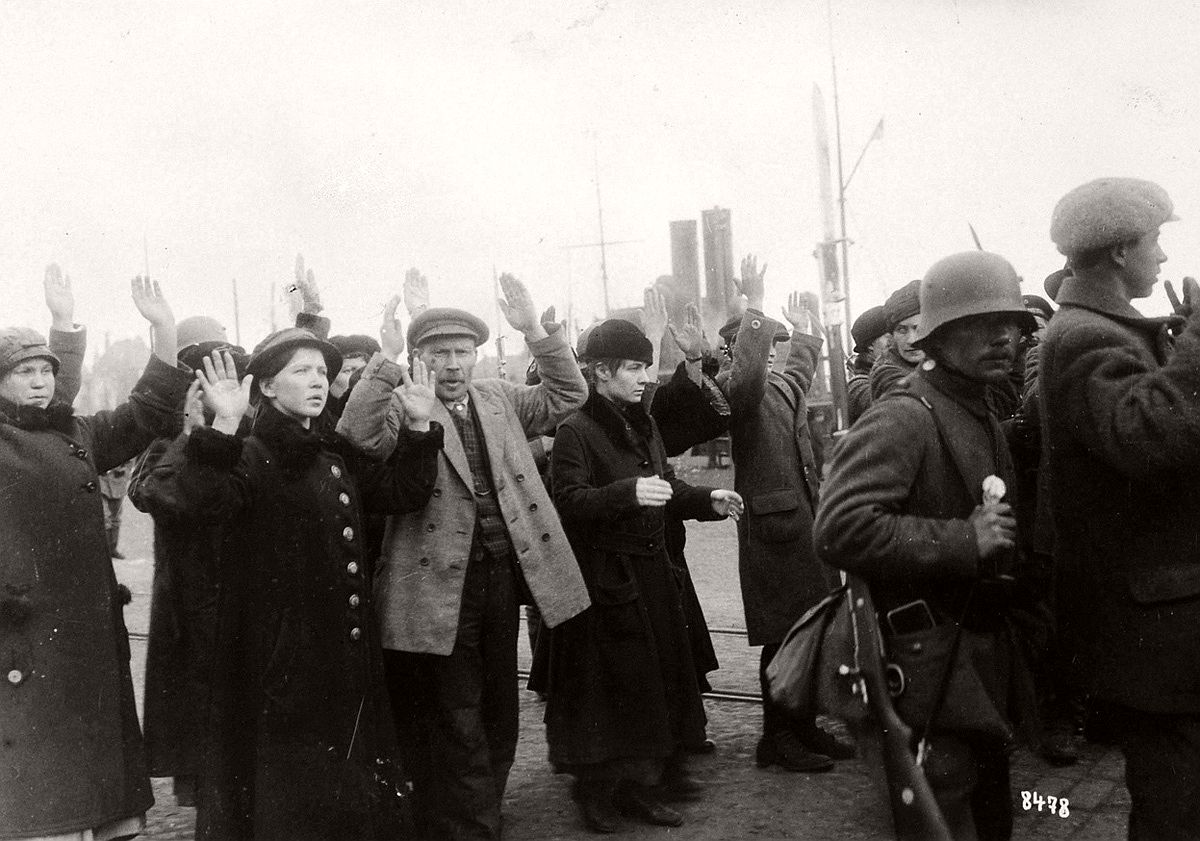
German troops in Finland during the Finnish Civil War, part of a series of conflicts spurred on by World War I. Red troops, both men and women, ready for deportation from Hango, in April of 1918. Two main groups, “Reds” and “Whites” were battling for control of Finland, with the Whites gaining the upper hand in April of 1918, helped by thousands of German soldiers. # National Archive / Official German Photograph of WWI
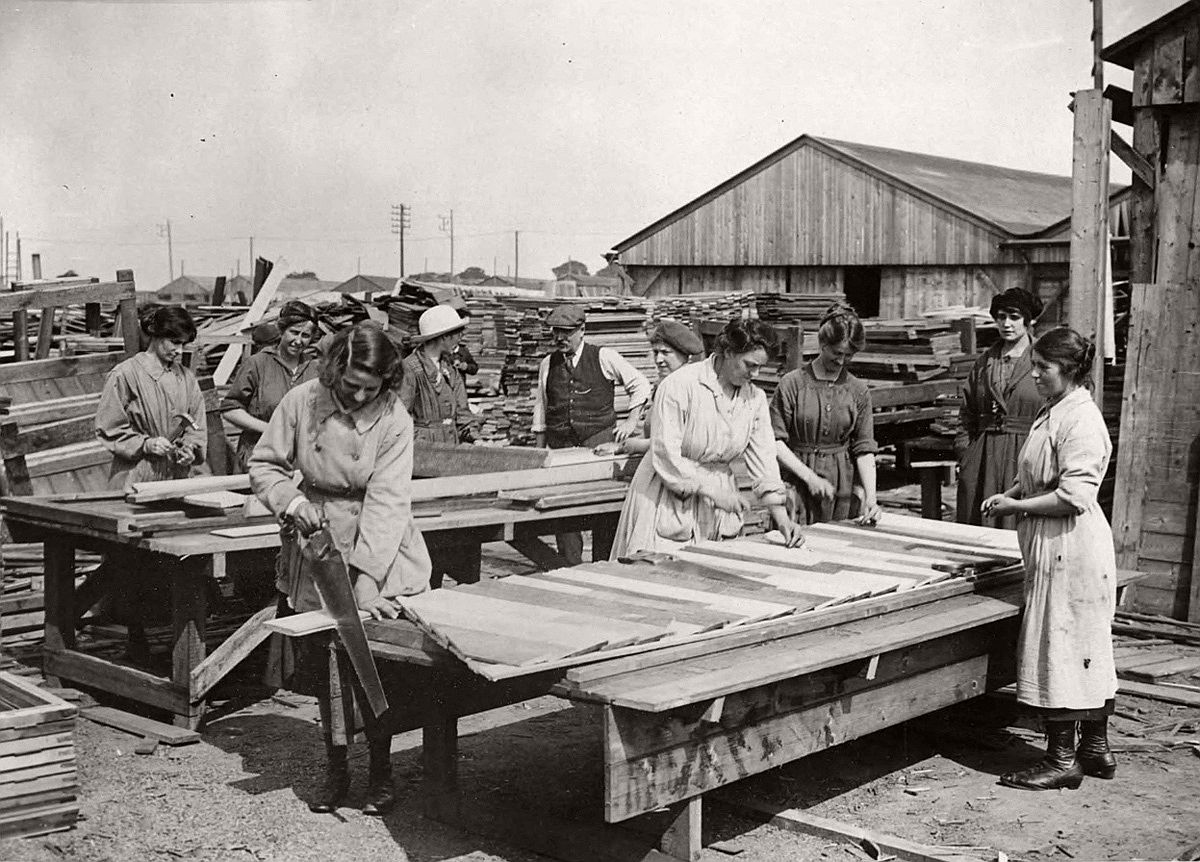
A group of female carpenters work in a lumber yard in France, constructing wooden huts. While they do not have a uniform, all the women appear to be wearing a protective coat or pinafore over their clothing. It is thought this photograph was taken by the British official photographer, John Warwick Brooke. Q.M.A.A.C. stands for Queen Mary’s Army Auxiliary Corps. Formed in 1917 to replace the Women’s Auxiliary Army Corp, by 1918 around 57,000 women made up the ranks of Q.M.A.A.C. # National Library of Scotland
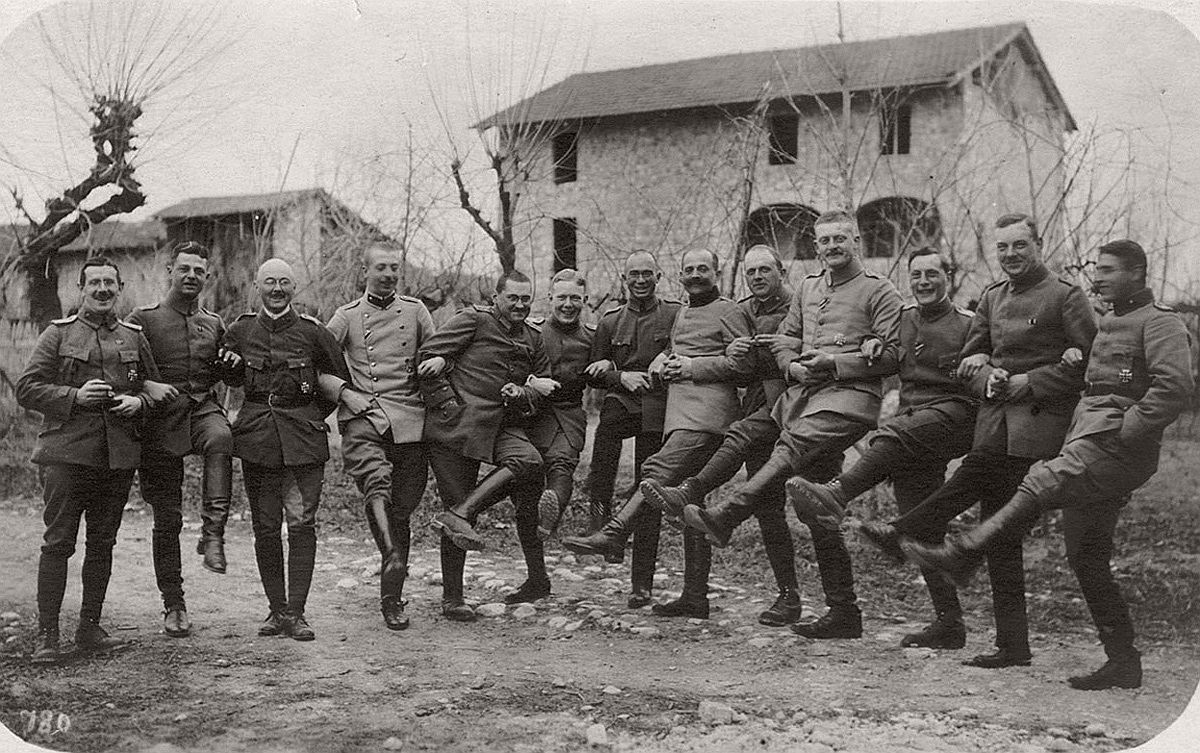
The Kaiser’s Birthday. German officers during the Kaiser’s birthday celebrations in Rauscedo, Italy, on January 27, 1918. # CC BY-SA Carola Eugster

